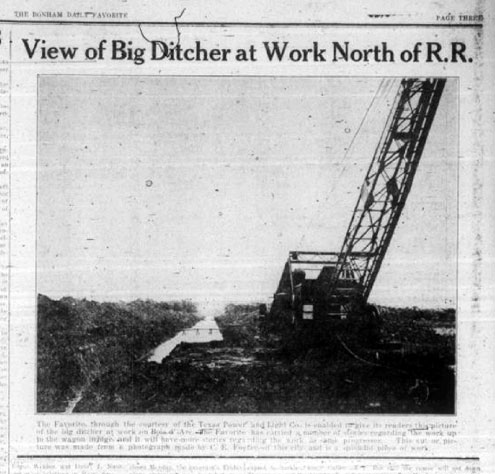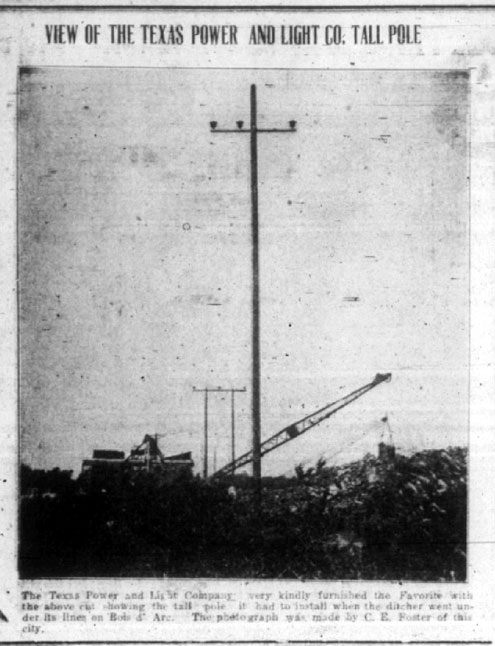
In May 1928 a “modern ditcher,” “a machine of wonderful power,” was unloaded from the DB & NO Railway in Bonham and was soon put to work. It was a great undertaking.
The “unruly stream” was getting a well-needed cleaning to restore to cultivation land of great value. At the beginning of the project the public was requested to go down Seven Oaks road to see the massive machine.
The ditcher was at work day and night, with 3 crews. It had a massive shovel capable of picking up a wagon load of dirt at a time. It attracted many viewers. It could also be heard for a long distance (put-put-put).
The ditch was about 30 feet wide at the bottom and at the top 45 feet wide.
“In the old days, when such vast propositions were undertaken, it took oodles of teams and men to do the work. This work is being done by nine men.”
This great photo is from the Bonham Daily Favorite. Articles on the project were in many issues of Favorite.

On a Sunday in May thousands of people showed up to see the machine do its work.
“Barbecue men, soda pop vendors and ice cream cone men” were there. The Bonham Daily Favorite said: “If you have not been down, you are more of a curiosity than the dragline.”
Telephone, telegraph and power lines had to be moved. Stumps were dynamited. The T&P railroad put in new pilings for a new bridge. The ditcher cleaned out a bit of Powder Creek.
Another photo shows the new pole that was erected to raise the power line to allow the ditcher to get under it.

A second bigger digger arrived a few months later. A new bridge was built at Gober. There were huge trees and underbrush, “both of which have been there since the Indians roamed the woods,” to be disposed of.
At the same time, of course, similar work was being done on the North Sulphur, but with much different and unexpected results. That’s a separate story.


